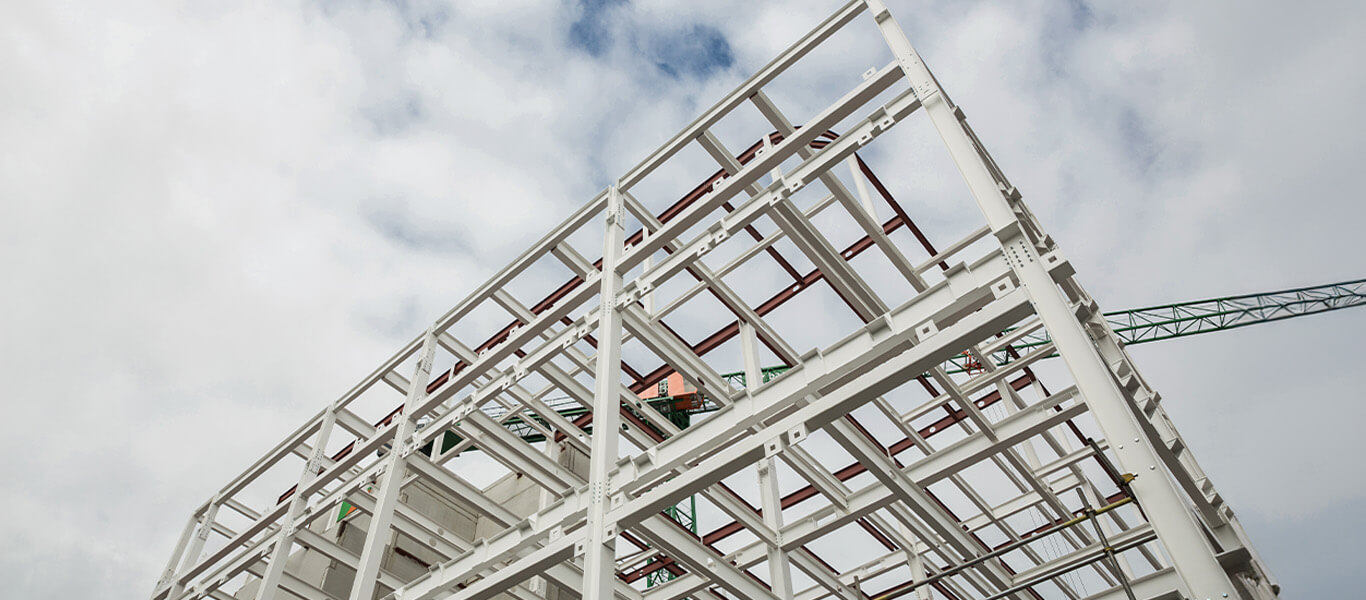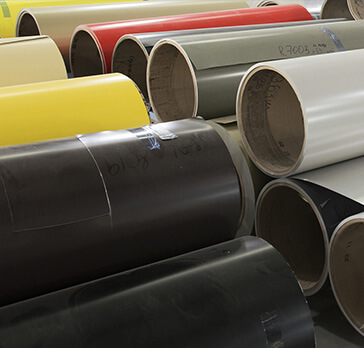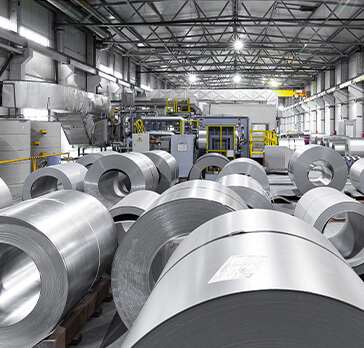Residential construction traditionally relies on materials like wood, concrete, and brick for framing structures. These methods have been the backbone of home building for centuries, offering familiarity and reliability. However, they come with limitations in terms of durability, design flexibility, and environmental impact.
In recent years, steel framing has emerged as a compelling alternative to traditional residential construction methods. Utilizing steel beams, columns, and studs, this approach offers a modern, efficient, and sustainable solution for building homes. Steel framing involves assembling structural components made of steel, providing numerous benefits over conventional materials.
Throughout this article, we will explore the myriad advantages of steel framing in residential construction. From durability and strength to sustainability and design flexibility, steel framing offers a host of benefits that address the shortcomings of traditional construction methods.
We’ll delve into its advantages in terms of durability, design flexibility, sustainability, fire resistance, cost efficiency, speed of construction, resistance to natural disasters, noise reduction, and overall comfort.
By the end, it will be evident why steel framing is becoming increasingly popular among builders and homeowners alike.
Durability and Strength
A. Steel’s Superior Strength Compared to Traditional Materials:
One of the primary advantages of steel framing in residential construction is its unparalleled strength when compared to traditional materials like wood. Steel boasts a high strength-to-weight ratio, meaning it can support greater loads with less material. This inherent strength allows for the construction of larger, more open spaces without the need for excessive support columns or walls. Additionally, steel framing provides structural integrity that remains consistent over time, ensuring the long-term stability of the building.
B. Resistance to Pests, Rot, and Decay:
Unlike wood, which is susceptible to damage from pests like termites and carpenter ants, steel framing is inherently resistant to infestations. Additionally, steel is impervious to rot and decay, common issues that plague wooden structures over time. This resistance to biological deterioration ensures that steel-framed homes maintain their structural integrity and aesthetic appeal for decades, even in environments prone to moisture and humidity.
C. Longevity and Reduced Maintenance Requirements:
Steel framing offers exceptional longevity, outlasting traditional materials by a significant margin. With proper maintenance, steel structures can endure for generations without the need for major repairs or replacements. Unlike wood, which may require regular painting, sealing, or replacement of damaged sections, steel framing is virtually maintenance-free. This reduced maintenance requirement translates to cost savings and peace of mind for homeowners, as they can enjoy their homes without the hassle of ongoing upkeep.
Design Flexibility
A. Ability to Create Open Floor Plans and Expansive Living Spaces:
Steel framing enables architects and builders to create spacious and open floor plans without the constraints imposed by traditional construction methods. The strength and durability of steel allow for larger spans between load-bearing walls, resulting in expansive living areas that flow seamlessly from one space to another. This versatility enhances the functionality and aesthetic appeal of residential spaces, providing homeowners with the freedom to customize their homes to suit their lifestyle and preferences.
B. Flexibility in Architectural Design, Including Curved Walls and Unique Shapes:
Unlike wood, which is limited in its ability to support complex architectural designs, steel framing offers unmatched flexibility in shaping and sculpting residential structures. Architects can incorporate curved walls, unique shapes, and innovative design elements that would be difficult or impossible to achieve with traditional materials. This flexibility allows for the creation of visually striking homes that stand out in both form and function, showcasing the creative potential of steel framing in residential construction.
C. Accommodation of Large Windows and Doors Without Sacrificing Structural Integrity:
Steel framing provides the strength and stability necessary to support large windows and doors, allowing for abundant natural light and expansive views in residential spaces. Unlike wood, which may require additional structural support to accommodate oversized openings, steel framing can bear the weight of larger fenestrations without compromising the structural integrity of the building. This feature enhances the connection between indoor and outdoor spaces, creating a sense of openness and inviting natural elements into the home.
Sustainability and Environmental Benefits
A. Recyclability of Steel and Its Reduced Environmental Impact:
Steel is one of the most recyclable materials on the planet, with a high recycling rate that minimizes the need for virgin steel production. By incorporating recycled steel into residential construction, builders can reduce the environmental impact of their projects and contribute to resource conservation efforts. Additionally, steel framing generates less waste during the construction process compared to traditional materials like wood, further reducing its environmental footprint.
B. Energy Efficiency Due to Reduced Waste and Construction Time:
The efficiency of steel framing translates into energy savings throughout the construction process and the lifespan of the building. Steel components are precision-engineered off-site, minimizing on-site waste and reducing construction time. This streamlined construction process results in lower energy consumption and greenhouse gas emissions associated with transportation, manufacturing, and construction activities. Additionally, the tight seals and precise fit of steel framing contribute to improved energy efficiency in residential buildings, reducing heating and cooling costs for homeowners.
C. Contribution to Green Building Certifications Like LEED:
Steel framing aligns with the principles of sustainable construction and can contribute to achieving green building certifications such as Leadership in Energy and Environmental Design (LEED). By utilizing recycled materials, minimizing waste, and optimizing energy efficiency, steel-framed homes can earn points toward LEED certification, demonstrating a commitment to environmental stewardship and sustainable building practices. This recognition not only enhances the marketability of residential properties but also fosters a culture of sustainability within the construction industry.
Fire Resistance and Safety
A. Steel’s Inherent Fire Resistance Compared to Wood:
Steel framing offers superior fire resistance compared to wood, making it a safer choice for residential construction. Unlike wood, which can ignite and fuel fires, steel does not burn and will not contribute to the spread of flames. This inherent fire resistance provides added protection for homeowners and reduces the risk of catastrophic fire-related damage to residential properties.
B. Lower Risk of Fire-Related Damage and Insurance Premiums:
Due to its fire-resistant properties, steel framing can result in lower insurance premiums for homeowners. Insurance companies recognize the reduced risk of fire-related damage in steel-framed homes and may offer discounted rates as a result. Additionally, the minimal fire-related damage associated with steel framing can lead to lower repair and replacement costs in the event of a fire, further contributing to cost savings for homeowners.
C. Safety Benefits for Inhabitants During Fire Events:
Steel framing enhances the safety of occupants during fire events by providing a sturdy and stable structure that withstands heat and flames. In the event of a fire, steel framing maintains its structural integrity for a longer period compared to wood, giving occupants more time to evacuate safely. This increased safety margin can make a significant difference in preserving lives and minimizing injuries in residential settings.
Cost Efficiency
A. Initial Cost Savings Due to Material Efficiency and Reduced Labor:
Steel framing offers cost savings during the construction phase due to its material efficiency and reduced labor requirements. Steel components are precision-engineered off-site, minimizing waste and optimizing material usage. Additionally, the lightweight nature of steel makes it easier to handle and install, reducing labor costs associated with construction. These cost-saving benefits contribute to a more efficient and economical building process for homeowners and builders alike.
B. Long-Term Savings Through Lower Maintenance and Insurance Costs:
Steel framing provides long-term cost savings by reducing maintenance and insurance costs for homeowners. Unlike wood, which may require regular maintenance and repairs to address issues like rot, decay, and pest infestations, steel framing is virtually maintenance-free. Additionally, the fire-resistant properties of steel can lead to lower insurance premiums, further reducing the overall cost of homeownership over time.
C. Consideration of Total Lifecycle Costs and Return on Investment:
When evaluating the cost efficiency of steel framing, it’s essential to consider the total lifecycle costs and return on investment. While the initial upfront cost of steel framing may be higher than traditional materials, the long-term savings in maintenance, insurance, and energy costs can outweigh this initial investment. By considering the overall lifecycle costs and benefits, homeowners can make informed decisions that maximize the value and affordability of their residential construction projects.
Speed of Construction
A. Reduced Construction Time Compared to Traditional Methods:
Steel framing offers faster construction times compared to traditional methods, thanks to its precision-engineered components and streamlined installation process. Steel components are fabricated off-site and delivered to the construction site ready for assembly, reducing on-site construction time and labor requirements. This accelerated construction timeline enables homeowners to move into their new homes sooner and reduces the overall duration of construction projects.
B. Benefits for Tight Project Timelines and Adverse Weather Conditions:
The speed of construction associated with steel framing makes it ideal for projects with tight timelines or those facing adverse weather conditions. Unlike traditional construction methods, which may be delayed by inclement weather or unforeseen complications, steel framing allows for greater predictability and efficiency in project scheduling. This resilience to external factors ensures that residential construction projects stay on track and are completed in a timely manner.
C. Increased Predictability and Efficiency in Project Scheduling:
Steel framing enhances predictability and efficiency in project scheduling, thanks to its standardized components and streamlined construction process. Builders can accurately estimate project timelines and allocate resources more efficiently, reducing the risk of delays and cost overruns. Additionally, the prefabricated nature of steel components allows for better coordination between trades and subcontractors, further optimizing project scheduling and execution.
Resistance to Natural Disasters
A. Steel’s Resilience Against Earthquakes, Hurricanes, and High Winds:
Steel framing provides superior resistance to natural disasters such as earthquakes, hurricanes, and high winds, making it a safer choice for residential construction in disaster-prone regions. Steel’s strength and flexibility enable structures to withstand seismic forces and wind loads that would cause significant damage to buildings constructed with traditional materials like wood. This resilience enhances the safety and stability of residential properties, providing peace of mind for homeowners facing potential natural disasters.
B. Protection of Occupants and Belongings During Extreme Weather Events:
Steel framing offers enhanced protection for occupants and belongings during extreme weather events by minimizing the risk of structural failure and damage. Unlike wood, which may splinter or collapse under the force of strong winds or seismic activity, steel framing maintains its structural integrity, safeguarding occupants from harm. Additionally, the durability of steel framing reduces the likelihood of costly repairs and replacements following natural disasters, mitigating financial losses for homeowners.
C. Peace of Mind for Homeowners in Disaster-Prone Regions:
For homeowners residing in disaster-prone regions, steel framing provides invaluable peace of mind knowing that their homes are built to withstand the forces of nature. Steel-framed homes offer a higher level of resilience and safety compared to those constructed with traditional materials, reducing the risk of catastrophic damage and loss. This sense of security allows homeowners to weather natural disasters with confidence, knowing that their homes and loved ones are protected.
Noise Reduction and Comfort
A. Soundproofing Benefits of Steel Framing Compared to Wood:
Steel framing offers superior soundproofing benefits compared to wood, thanks to its dense and non-porous nature. Steel components effectively block airborne sound transmission, reducing noise pollution from external sources such as traffic, neighbors, and environmental disturbances. This soundproofing capability creates a quieter and more peaceful indoor environment, enhancing the comfort and quality of life for residents.
B. Enhanced Indoor Comfort Through Reduced Noise Transmission:
The soundproofing properties of steel framing contribute to enhanced indoor comfort by minimizing noise transmission between rooms and floors within residential properties. Unlike wood, which may transmit sound vibrations and impact noise throughout the structure, steel framing provides a barrier against unwanted noise, creating a more tranquil and relaxing living environment. This improved acoustic performance allows residents to enjoy greater privacy and concentration, fostering a more comfortable and productive lifestyle.
C. Quality of Life Improvements for Residents:
Steel framing enhances the quality of life for residents by creating a quieter, more comfortable, and harmonious living environment. The reduction in noise pollution and sound transmission improves sleep quality, concentration, and overall well-being for occupants of steel-framed homes. Additionally, the enhanced thermal insulation properties of steel framing contribute to more consistent indoor temperatures and reduced energy consumption, further enhancing comfort and sustainability. By prioritizing resident comfort and satisfaction, steel framing elevates the residential living experience and promotes a higher standard of living for homeowners.
Conclusion
Steel framing offers numerous advantages over traditional construction methods, including superior durability, design flexibility, sustainability, fire resistance, cost efficiency, speed of construction, disaster resistance, noise reduction, and overall comfort. These benefits make steel framing an attractive option for residential projects.
As awareness of these benefits grows, builders and homeowners are increasingly considering steel for their construction needs. Steel framing ensures superior quality, durability, and performance, providing long-term benefits for homeowners. Ongoing advancements in steel technology and practices continue to enhance its efficiency, sustainability, and performance, solidifying its place as a top choice for residential construction.
Interested in learning more about how our steel products can enhance your residential construction projects? Visit our product pages to explore our extensive range of high-quality steel materials. Whether you’re looking for durable Hot Rolled Coils, Cold Rolled Coils, or specialized options like Galvanized, Galvalume, and Prepainted Coils, we have the materials you need to bring your construction projects to life.


